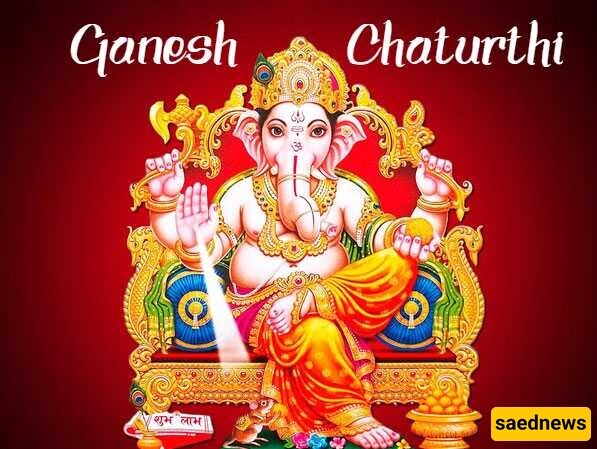Saed News: The Ganesh Chaturthi festival is celebrated annually by Hindus in honor of "Ganesh," the son of the "Goddess Shiva."

According to Hindu beliefs, or Hinduism, they have five main gods (Brahma, Shiva, Vishnu, Durga, and Ganesh), with Ganesh being the eldest son of Shiva. Hindus refer to this god as Lord Ganesh. The statues made of him depict a figure with an elephant's head and a human body, four hands, and usually riding a small mouse, holding objects in each hand (a mace, rope, sweets), each symbolizing something specific. One of his hands is held out flat, symbolizing the god's generosity.

The Ganesh Chaturthi festival (Ganesh Chaturthi) is one of the famous festivals in India, celebrated every year in late summer in Hyderabad. During this festival, thousands of Hindus gather together and hold various activities as part of a festival in honor of the Hindu god with an elephant's head and a human body. Some of the rituals include breaking coconuts as a form of plant sacrifice, carrying torches on their heads, and parading a statue of Ganesh towards a Hindu temple. This festival takes place every year in August and September (the months of Shahrivar and Mehr in the Iranian calendar). Ganesh Chaturthi, also known as Vinayaka Chaturthi in Hindu tradition, is an eleven-day festival celebrating Ganesh's arrival on Earth with his mother, Goddess Parvati. It begins on the fourth day (Chaturthi) of the Bhadrapada month (in the Hindu calendar). If you've traveled to India, you may have seen the statues of Ganesh, the god of prosperity and wisdom, with the head of an elephant, in temples.
Devotees gather around a large statue of Lord Ganesh (Ganesha) during the ten-day festival of "Ganesh Chaturthi," which is held in various cities across India. On the final day of the festival, participants perform rituals before the statue is submerged in the sea or a river, as an act of farewell. Ganesh is known as the god of prosperity and comfort. On the final day, devotees sing prayers, dance around the statue, and show their reverence by performing worship.

According to ancient Indian texts, Ganesh is a mythological figure who is completely devoted to his mother, Parvati, and listens to no one except her. When Parvati ordered him to keep anyone out of the house while she was bathing, Ganesh stopped his father, Shiva, from entering. This angered Shiva, who beheaded him. To bring him back to life, they attached an elephant's head to his body.
The festival includes preparing clay statues of Ganesh and performing prayer ceremonies for him. The statues are placed on raised platforms either inside the house or outside. Vedic hymns from sacred texts like the Rigveda, Ganapati Atharvashirsa, and Upanishads are recited during the ceremony. A priest performs a "prana pratishtha" (inviting Ganesh as a guest). Following this, a 16-step ritual called "Shodashopachara" is conducted, where the statue is anointed with red sandalwood paste and yellow and red flowers. People also offer offerings like prasad (blessed vegetarian food), coconuts, grapes, and modak, believed to be Ganesh's favorite. At the end of the festival, the statues are carried in a procession with music, chanting, and dancing to the local rivers, where they are submerged (the clay idol dissolves). This ritual is symbolic of Ganesh's journey back to his home, Mount Kailash, to join his parents, Shiva and Goddess Parvati.
The Ganesh Chaturthi festival represents the cycle of birth, life, and death. Ganesh is known as the god of new beginnings, remover of obstacles, and the god of wisdom. The festival became widely popular among Hindus in the 19th century. If you travel to India during this time, it is recommended to try the traditional modak, a steamed or fried dumpling made with rice or wheat flour, filled with grated coconut, dried fruits, and spices.





